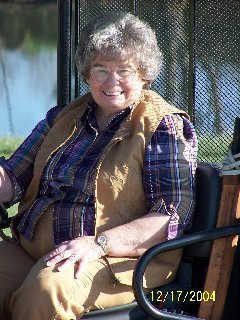In a waiting room before an appointment, Gerald picked up a Carbondale Times and read about Jim Loewen’s upcoming lecture at the John A. Logan Museum at Murphysboro. He commented that he’d like to attend. We seem unable to do many such activities, so even though I knew I would also like to hear him, I did not think much about it although I did fold the Times and put it in my purse just in case we needed the information. Then on Sunday before last, a longer even more enticing article appeared in the Southern Illinoisan. Again I figured we would not make a night event.
But at noon last Wednesday, we decided there was really no reason we could not attend. I had been to the museum only once a few years ago, and I knew Gerald would enjoy the displays there as well as the lecture. What Mike Jones has accomplished with this museum in his retirement is very fine, and he is definitely not one of the history teachers Loewen had indicted in Lies My Teacher Told Me: Everything Your High School History Textbook Got Wrong.
Our friend Marilyn Schild had introduced me to Loewen when she loaned me Sundown Towns: A Hidden Dimension of American Racism. I was surprised when the first chapter started out with some very ugly examples from my home town of Anna-Jonesboro. I knew as I grew up that people sometimes said that there was an unwritten law that no blacks were allowed in town after dark. But I never heard it said as if that was a good policy—but simply a statement of historical fact. (Other than that occasional comment, I do not remember hearing many overt racist remarks as I grew up.) But I grew up many years ago, and I assumed attitudes had changed. And I think the attitudes of the majority of people there are quite accepting of all races.
Nevertheless, Jim Loewen not only explained the beginning of that racist sundown rule in Anna, but he made me realize that among some people, attitudes may have gotten worse. Some smart aleck had used the word Anna (named after Anna Willard Davie whose husband started the town) as an acronym for the sundown rule that ain’t no blacks allowed. Evidently this tickled enough people’s fancy that the saying took hold. I do not know when that explanation for Anna started, but I don’t think it existed in the 1950s when I lived there. (I may be wrong. Maybe it was just the scum bums who said it, and I was blessed to not know those folks.)
Lowen’s thesis was that by the turn of the 20th century, many communities joined the common pattern of refusing to allow blacks to live in their midst. This was often spurred by some violence or imagined violence by a black resident. This would be an excuse to forgo a trial and cause a town to drive out all people of color and forbid any others to live there after that.
In the case of my home town of Anna-Jonesboro, a young local woman moved to Cairo and was raped and murdered, and a black man there was accused (probably falsely) of the deed. At least a sheriff trying to protect him from a mob became convinced he was probably innocent. But he was lynched nevertheless, and people of Anna attended that social event and raised money for a fine tombstone for the victim in the Anna cemetery. (We cannot blame her that her tombstone became a instigator of prejudice. I feel so sorry for her not only for having her life cut short by a terrible crime but then having emotional frightened non-thinking people use her death to create hatred. Oddly her first name was Anna.)
What the book makes clear is not the sordid story of the real rapist still uncaught while likely the wrong man was hung, but that all over the nation this pattern was repeated. At his lecture last Wednesday night, Loewen said there were 500 or so communities in Illinois that could be classified as sundown towns. The rich suburbs with excellent schools but with their un-American racist injustice were revealed for what they are just as Lorraine Hansberry told us.
Loewen’s lecture was announced as centering on the lies that were told about the Civil War. He used the original documents to show that states declared they were withdrawing from the Union because of their fear that slavery would be abolished. (These same states were definitely against new states having the right to be allowed to decide whether they would be free or slave.) He explained how the text books much later started claiming that states rights was the cause of the war and how that misinformation was carried from one edition to the next, so that many in the audience admitted with raised hands that they were taught that.
It was a stimulating evening with a record crowd, Mike Jones said when he welcomed Loewen. It was interesting the next day to read my favorite local reporter Linda Rush’s account in the Southern. I need to get Marilyn's book back to her and acquire my own copy. I definitely recommend it to help you understand why our inner cities are in such distress.
Yorktown Virginia
-
On Sunday, after our museum day, Wesley and I drove to Yorktown Va. I am
so glad we ventured out looking for a waterfront on this trip. I had to
mercha...
5 years ago












No comments:
Post a Comment